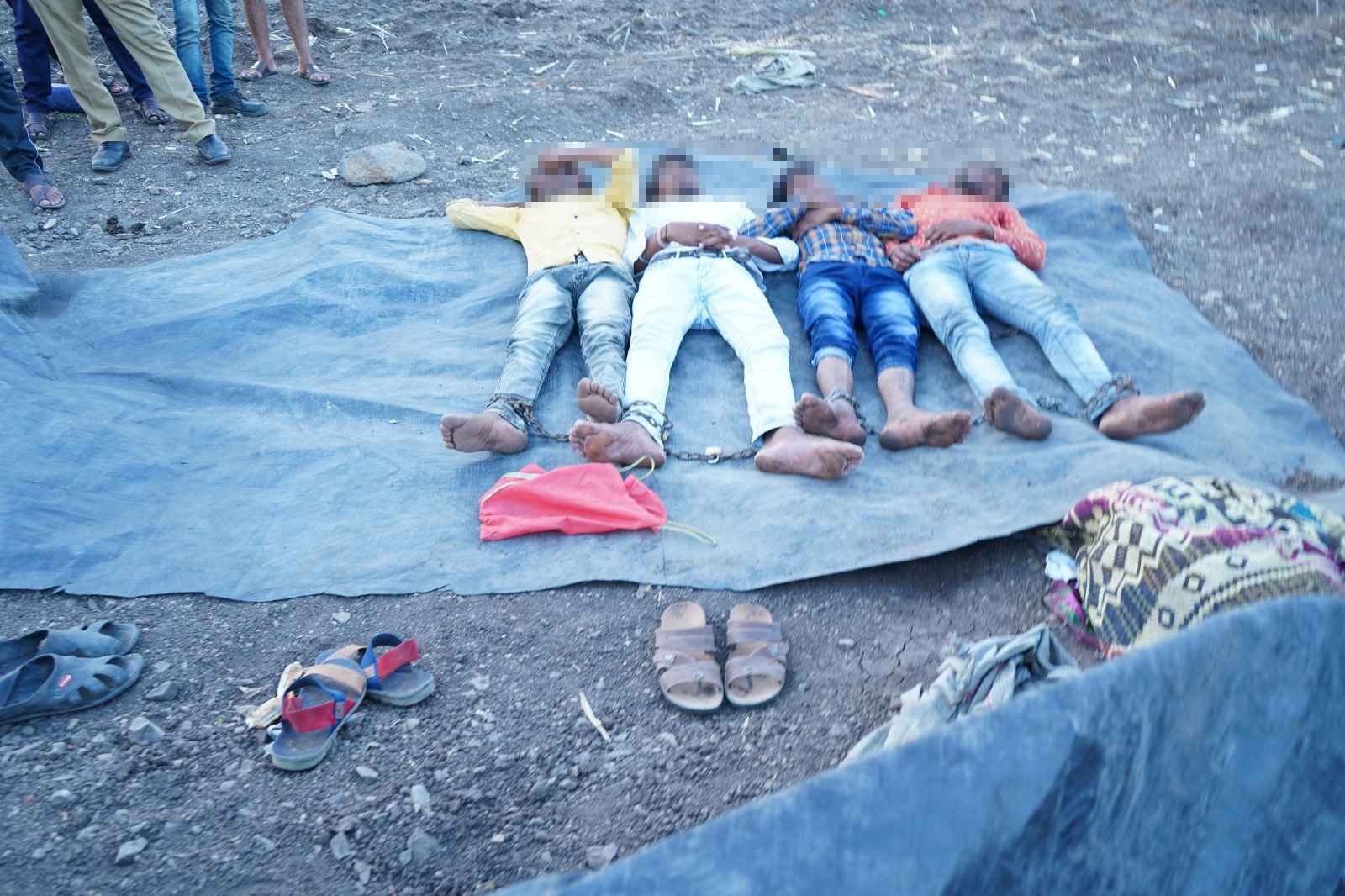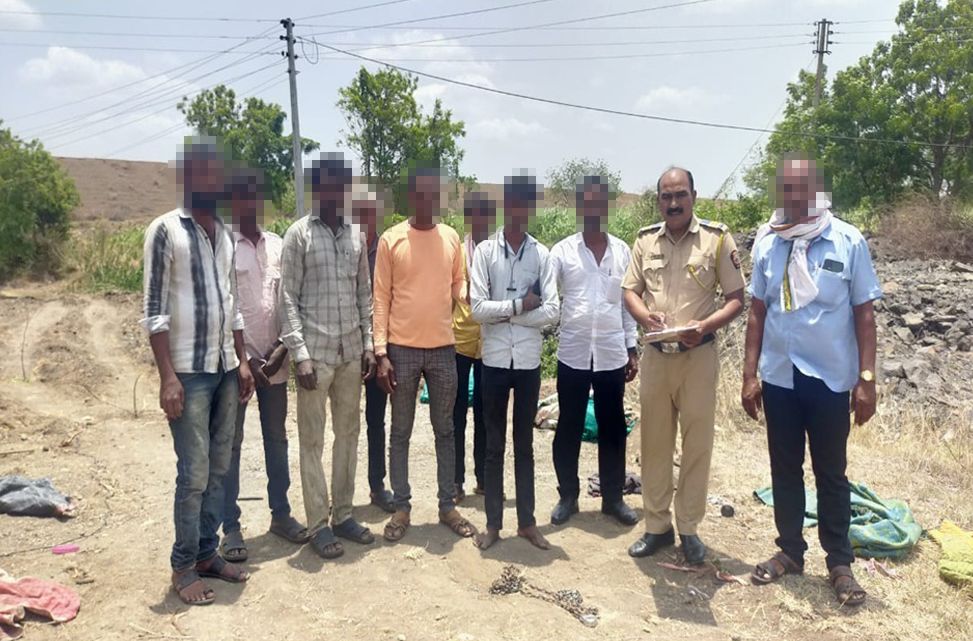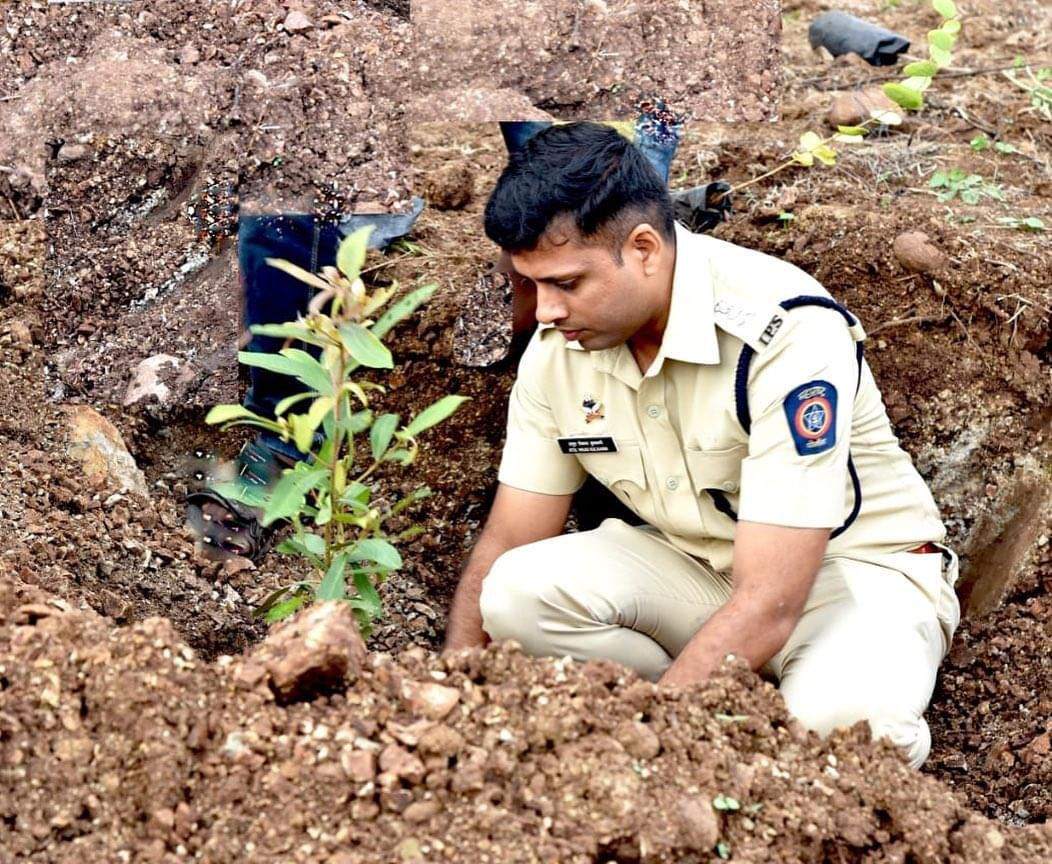Trigger warning: Mention of abuse, trauma and injury.
This morning, Parth (name changed to protect identity) is thoroughly impressed with his team at work. As a production inspector at a leading automobile firm in Aurangabad, his position is one of great responsibility. And he does not take this job lightly.
Not more than a year to this day, his life looked very different. An air-conditioned office for a workspace was substituted by a 90-foot-deep well in Maharashtra’s Osmanabad district — where Parth along with 10 other men was expected to clock 14 hours of rigorous work every day, surveilled by ‘contractors’ who had lured the group to the site under the garb of a well-paying job.

Parth and his companions were sentenced to months of bonded labour. “I was told there was some electrical and painting work to be done at this site in Dharashiv, Osmanabad. I agreed because they promised me Rs 700 per day along with meals,” reasons Parth, adding that he was aghast to discover the reality that awaited them when they reached the location.
It was too late to turn back.
“They told us that we would have to work in a well from 7 am to 10 pm without a break. They didn’t give us any food throughout the day. Sometimes, we were given a jowar bhakri (flatbread made of sorghum) and salt. They even took our phones away to cut off all contact with the outside world,” Parth recalls.
Having lost all hopes of escaping these confines of torture, Parth had resigned himself to the fact that death was inevitable. To make matters worse, one day whilst working in the well, an electric motor fell on Parth’s leg, injuring the flesh to a great degree.

“My feet were bruised and I could not move them. But still, I was expected to work,” he maintains. One of the members involved in the rescue operation affirms this, on request of anonymity. “When the police cracked down on the case and found Parth, his leg was rotting. The long hours of work in the middle of the well water had worsened the condition. The police confirmed that if the rescue was even a little delayed, the leg would have to be amputated,” she notes.
Treated like slaves
Parth’s story might spark a few questions in your mind; the first being about the ethicality of bonded labour.
Is it still prevalent? Yes, it is.
While “abolished” is how the Ministry of Labour and Employment defines bonded labour — following the Bonded Labour System (Abolition) Act, 1976 — the truth is far from that.
The Act was intended to free unilaterally all the bonded labourers from bondage with simultaneous liquidation of their debts, while also making the practice of bondage a cognisable offence punishable by law.
Did it achieve its goals?
The findings of a Global Slavery Index report (2021) disagree. The report suggests that as of that year, around 11 million people in India were in modern slavery, which includes forced labour, debt bondage, forced marriage, other slavery and slavery-like practices, and human trafficking. This is against the backdrop of the Government’s 15-year vision to achieve “total abolition of bonded labour” with a plan to identify, release and rehabilitate an estimated 18.4 million bonded labourers across the country by 2030.

Parth’s story is a glimpse into the atrocities that bonded labourers must submit to at the cost of their freedom. And it comes at a price. The trauma of being holed up in a single room for days on end has left lasting scars on him. He finds it tough to articulate his experiences.
So, we turn to a BBC article that offers some insights. Following the expose, BBC did a deep dive into the inhumane conditions that the men were subjected to. Beaten, drugged, starved and chained to tractors is how Bhagwan Ghukse, one of the men that BBC interviewed, remembers the ordeal. Plans to escape the shackles of torture were clouded by pain, hunger and fatigue. But Bhagwan persisted. And, the article notes, one night, his hour-long attempt to undo the lock on the chain that was binding his feet together, was met with success.
Stunned for a few seconds at the prospect of being free finally, Bhagwan made a break for it.
A ray of hope in the form of an IPS
Seconding this narrative, Parth commends Bhagwan’s bravery. “He ran to his native village, informed his father about what had happened, and soon, the police came to rescue us.” When he credits his “second life” to IPS Officer Atul Kulkarni, he echoes the feelings of the others.
Currently posted as the superintendent of Dharashiv, Kulkarni vividly remembers this case for the level of “mastermind planning” it involved. He recalls how a petrified Bhagwan accompanied by his father reached the police headquarters on that fated day, narrating part of what had ensued at the site.
“He [Bhagwan] was scared, understandably,” Kulkarni reasons. “So, I sent a group of officers to the site to unearth more details and find the other bonded labourers.” But two hours of scouring the property yielded nothing. “The culprits [the contractors] kept insisting that there was no foul play and that only farming was going on. My team began checking the rooms on the property and on opening one of the doors, we saw the men,” Kulkarni continues.

Appalled at the picture that met his eyes — “Their hands and feet had been completely chained and they were unable to move. Their situation was pathetic, unimaginable for the 21st century. They were all tied in one room with barely any food and water” — Kulkarni and his team began the rescue operation.
“We immediately removed the chains and set them free, but they were mentally wrecked. We could see the hopelessness in their eyes; they didn’t think help would ever come.” What followed was a coming together of the social welfare, revenue, and labour departments to ensure that the 11 men were justly compromised for the unfair hand they had been dealt.
Parallelly, Kulkarni and his team conducted a raid targeted at nabbing every culprit with links to the case. “It is easy to catch one or two people and brand it a success story. But in this case, nabbing the kingpin wouldn’t be enough,” Kulkarni explains, adding that it was a well-thought-out hierarchy behind the operation. “Further probing led us to the network — recruiters, transporters who would take these labourers to designated places, employers who they were sold to — there were many layers to it.”
The team was successful in nabbing all involved, followed by stringent booking under kidnapping and trafficking sections.
But victims of bonded labour deserve more than freedom, the Government underscores. Rehabilitation is key in such cases, a way to ensure that these victims are not slaves to their past. To this end, data released by the Ministry of Labour and Employment suggests that out of 3,15,302 people released from bonded labour between 1978 and 2023, around 2,96,305 persons have been rehabilitated.
Officer Kulkarni too saw to it that Parth and his compatriots were given skill development and training, and thus a bridge into the world of dignified work.
Today, all 11 victims of the case have found hope in their newfound roles.
Severing crime at the root
Spotlighting the operation’s meticulous planning, Kulkarni says, “The contractors had ensured that the families of these men didn’t guess what was up. They had conveyed a bogus story to them, assuring them that they were being well-rewarded for their work and would be returning home soon.”
He adds that the families were under the impression that the men were engaged in work and happy, and thus, too busy to keep in touch over the phone.
Unearthing this racket wasn’t a simple feat. But if Kulkarni’s previous track record — as Addl. SP, Chandrapur (2022); Addl. SP Gondia Camp Deori where he handled anti-Naxal operations (2019); ASP in Thane, Maharashtra (2017-2019) — suggests anything, it is that his genius lies in cracking down on cases that would faze others.
Challenges are no deterrent to his bravado.
From a software engineer to now an integral part of the country’s law and order system, the digression has been intriguing. But, he sees it as fate. “I was always inclined to work for society. During my urban planning course at the Tata Institute of Social Sciences, I worked in many slums and villages where I was exposed to a lot of social issues.”
Once apprehensive about whether he would be a good fit for governance, Kulkarni found inspiration in the officers he met along the way. At 28, the young engineer decided to take a leap and appear for the UPSC exam. He cleared it on the first attempt.
Since then, Kulkarni has been breaking new ground with every project he undertakes. Early on, he understood that it is lack that leads to crime. His newest ‘Criminal Rehabilitation’ project at the Dharashiv village is founded on this premise.
“Policing and investigations are fine. But being a sociology student, I’m inclined to look for the source of these deep problems,” Kulkarni explains. A swell in cases of child marriages, farmer suicides, and land issues in Dharashiv village prompted the officer to create a model aimed at promoting community safety, sustainable development, and social well-being in the region.
Today, 30 villages of the Dharashiv district come under the purview of this project that has lofty goals — to address water-related issues; promote sustainable farming practices; improve healthcare through specialised programmes; enhance education opportunities; address women-related crimes, online gambling, liquor, and child marriage; and to expand and develop economic opportunities within the villages.

Just a year since its inception; the impact has been telling.
“There were around 300 families whose members were engaged in alcoholic and robbing activities. We rehabilitated them through this initiative. We have also ensured jobs for over 500 youth,” Kulkarni states.
If not for these training programmes, he says you’d spot these youth at signals in metropolitan cities, where they otherwise engage in seasonal begging. “There are around 40,000 people in the district living in hamlets. They do not even possess an Aadhaar Card or birth certificate, nor go to school or work. Their main income comes from robbing,” he adds.
Is it easy to convince these people to change their mindsets? “No, but I go personally knocking on their doors,” responds Kulkarni.
His quest to better people’s lives only grows with every passing day. And so, Parth’s newfound freedom is of special significance to Kulkarni, who is thrilled he was able to contribute to it. “It goes beyond duty. It’s an inner calling,” he smiles.
Edited by Pranita Bhat
No comments:
Post a Comment